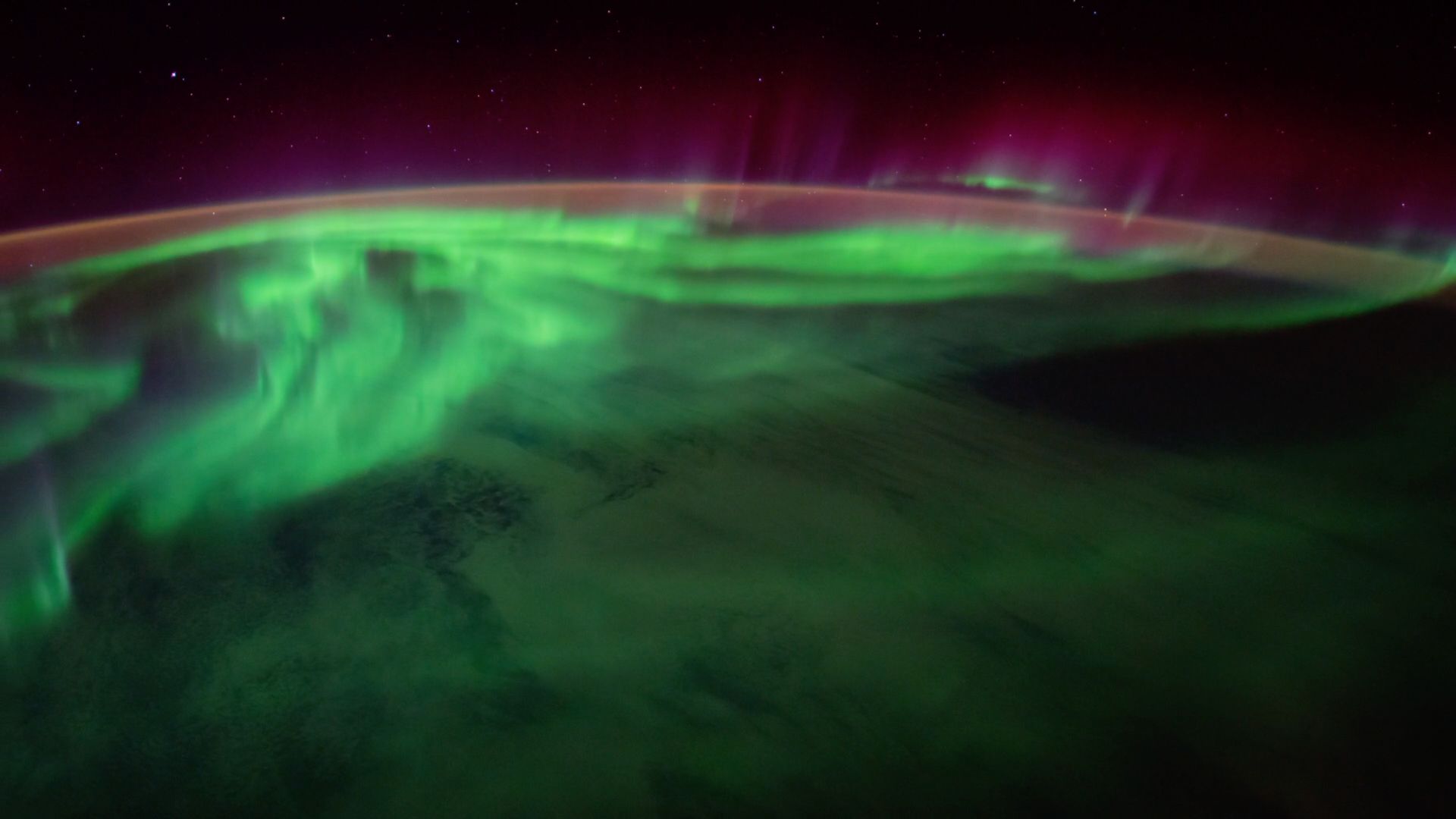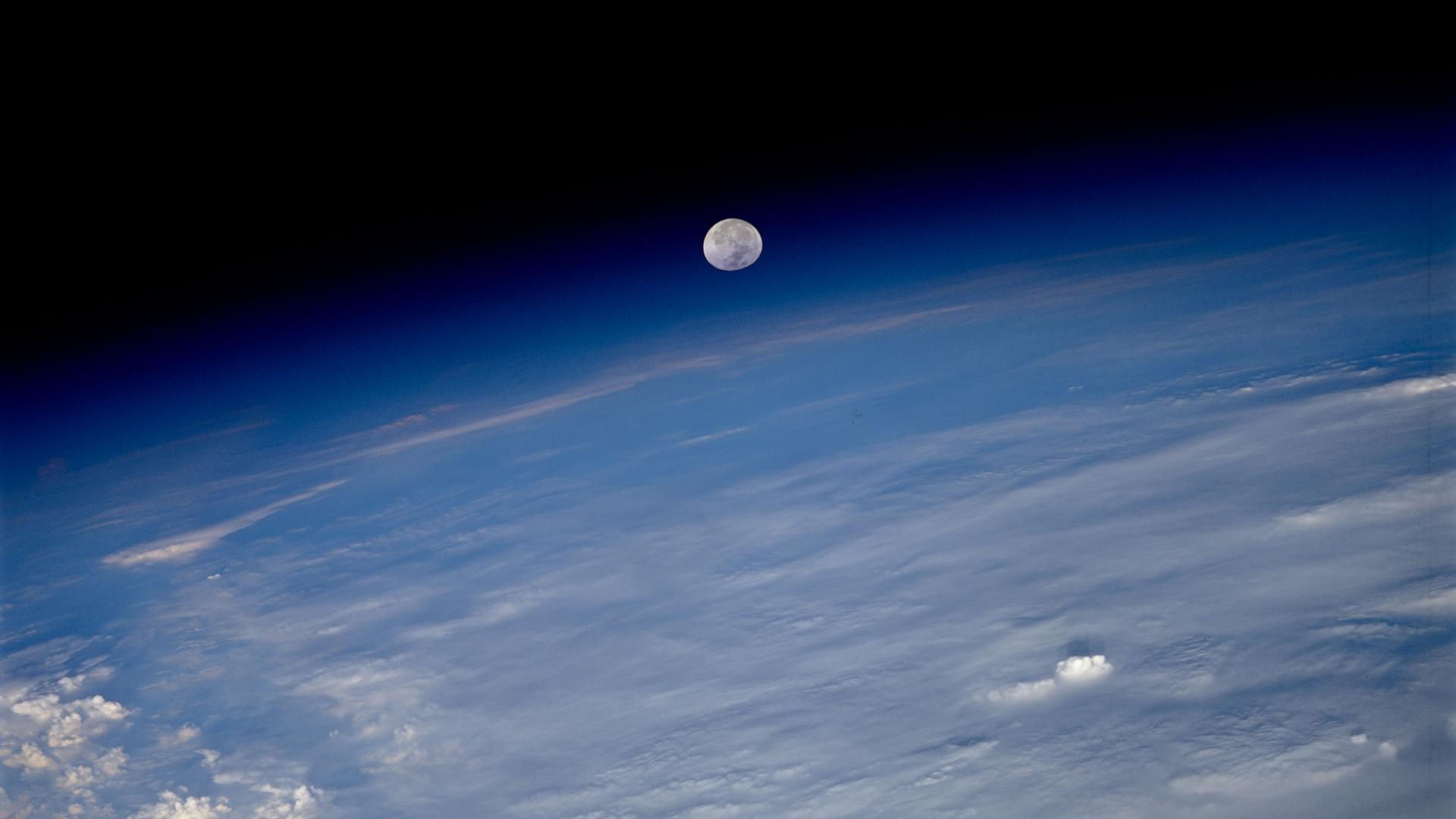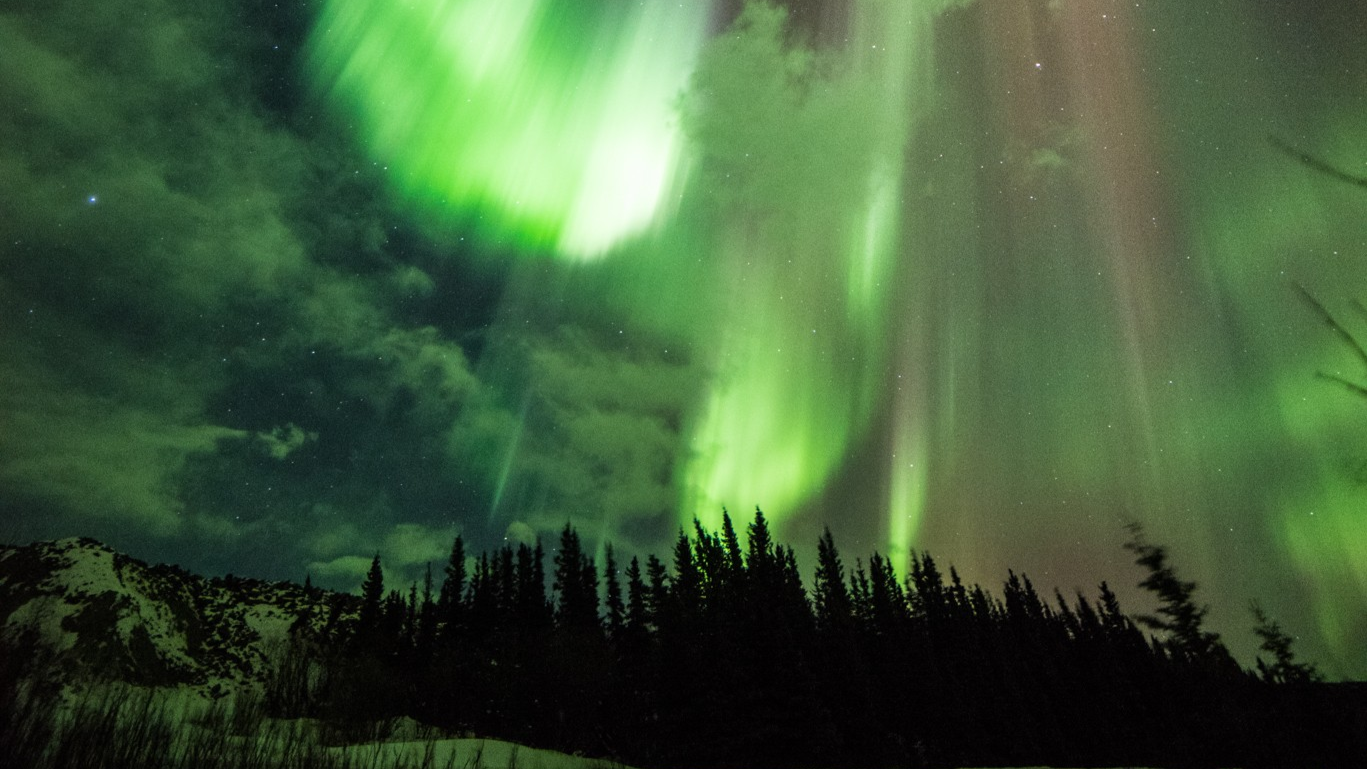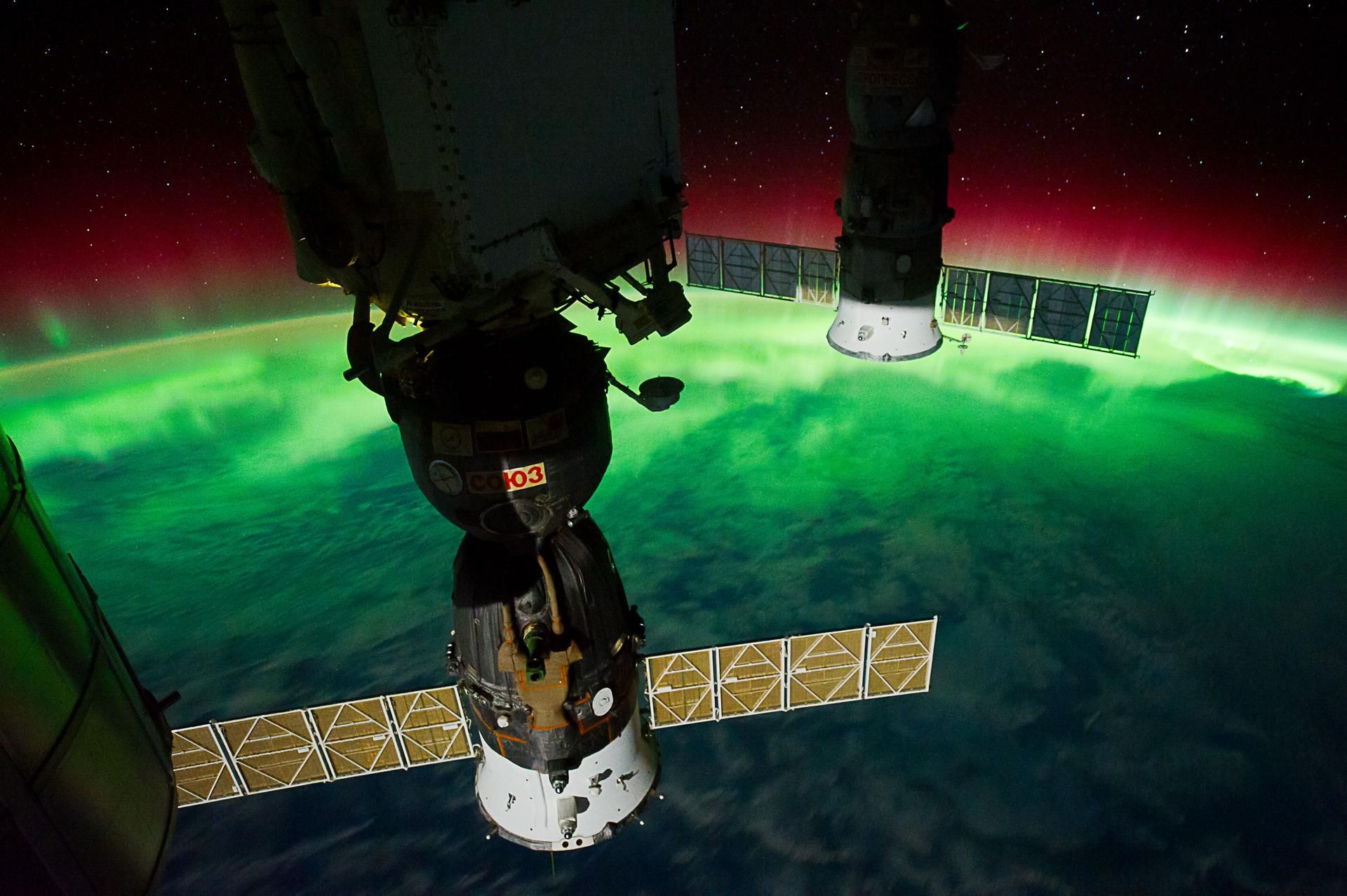Most everyone knows that the Northern Lights are gorgeous, but what actually is this phenomenon, and where does it come from? The answer involves a lot of science mumbo-jumbo, but don’t worry—I’ll break it down, and tell you the best way to see the Northern Lights in person.
What Are the Northern Lights?
The Northern Lights, also known as the Aurora Borealis, have a complex origin. They are caused by charged particles from the Sun, which are sent hurtling towards Earth as a result of solar activity such as flares, coronal mass ejections, or regular solar wind. These particles are violently ejected from the Sun and come barreling toward Earth at 1 million miles per hour, though it can be even faster.
This could be pretty bad for us Earthlings, but thankfully, we have a barrier of sorts called the magnetosphere. This is a magnetic field emanating from the center of the Earth and into space, created by the roiling iron core of our planet. You can think of the magnetosphere as a big bubble around the planet, though it’s not actually a uniform sphere.
Most of the charged particles coming at us from the Sun are deflected by the magnetosphere, but not all of them. Particles that are not deflected are redirected towards the North and South Poles.
Once they make it past our magnetosphere, these charged particles make it into our atmosphere, where they interact with elements like oxygen and nitrogen and charge them up.
The now-excited atmospheric elements shoot off that excess energy in order to return to a more stable energy state. This energy is dispersed in little pockets of light called photons. The color of these lights depends on where in the atmosphere they are released. For example, oxygen emitting photons (up to about 150 miles in the atmosphere) will produce green. Nitrogen up to about 60 miles in the atmosphere produces a light blue.
These colors can also mix together, creating other colors. This vibrant array of colors is the Northern Lights. Naturally, the Lights are most noticeable during periods of intense solar activity. Technically speaking, this whole process I’ve just described is happening all the time, but it’s much more noticeable when strong solar activity bombards our atmosphere with more particles than usual. Regardless, if you want to see the Northern Lights, there are a few things to take into consideration.
Where to Go to See the Aurora
As you can imagine, to see the Northern Lights, you need to go pretty far north. The absolute best place to go is anywhere within the “Auroral Zone.” This is an imaginary area around the world between 65° and 70° latitude, a region that is generally within a 1,500-mile radius of the North Pole. There are many countries that fall within this zone, including Greenland, Alaska, Canada, Finland, Norway, Sweden, and more.
The Auroral Zone is where the Northern Lights most frequently occur, but they can also show up further south of that Zone if solar activity is particularly high. Still, if you want the best shot at seeing the lights, paying a visit to somewhere in the Auroral Zone is your best bet. There are a number of particularly popular destinations that are known specifically for aurora sightseeing. Some of these popular destinations include:
- Lapland, Finland
- Orkney, Scotland
- Yellowknife, Canada
- Reykjavik, Iceland
- Headlands International Dark Sky Park, Michigan
- Fairbanks, Alaska
- Kangerlussuaq, Greenland
- Svalbard, Norway
- Jukkasjärvi, Sweden
- Voyageurs National Park, Minnesota
- Abisko National Park, Sweden
- Nellim, Finland
Of course, there are plenty of other places in the Auroral Zone where you can see the Northern Lights. But these are just a few locations that are specifically known for the appearance of the lights in their area. Generally speaking, the further north you can go, the better, but the time of year you pay a visit plays a big role as well. March is the best month of the year to try and see the lights, due to having more high geomagnetic activity days on average. October is only a little behind it.
Nighttime is, of course, the best time to try and see the lights. The Northern Lights are actually active and happening all the time, but they are incredibly difficult to see during the day because they are overpowered by other light sources. 9 P.M. to 3 A.M. is the best time to try and catch a glimpse, though this all depends on various other factors as well.
How to Maximize Your Chances of Seeing the Northern Lights
To start off, you need to understand one thing—there is nothing you can do to guarantee seeing the Northern Lights. Ultimately, this is a natural phenomenon that cannot be completely accurately predicted. There are all sorts of factors affecting the aurora and your ability to see them. Even if you do everything right, there is a chance that you will not see the Northern Lights. That’s unfortunate, but it doesn’t mean you can’t maximize your chances. There are a few things you need to do.
Check the Weather Forecast
Even if the Northern Lights are fully visible in the night sky, you won’t be able to see any of it if there are clouds between you and them. Needless to say, you have to plan your aurora-viewing excursions around the weather. There’s no point in going out to look for them on a completely overcast night, which will make it hard to see even if the Lights are present. Use a weather-tracking app to stay informed.
Avoid Full Moon Nights
It is technically not impossible to see the Northern Lights when there is a full moon. In fact, if the Lights are strong enough on a given night, you may be able to see them even with a full Moon illuminating the entire landscape around you. That would be an undeniably incredible experience. However, a full Moon does lower your chances of being able to see the Northern Lights due to the light pollution it emanates.
The Northern Lights are generally quite faint. You may be able to see particularly strong lights during a full Moon, but you could easily miss some weaker activity. Overall, it’s better to increase your chances and avoid a full Moon. It’s better to see a weaker aurora on a trip than it is to see no aurora at all. You can keep track of lunar phases with different apps or even a farmer’s almanac if you’re into the classics. Aim for a new Moon for the best viewing environment!
Stay Up as Long as You Can
The lights are fickle and can be very sporadic. They can appear very suddenly and without any warning. This means you shouldn’t write off a sighting at any point during the night. Even if you’ve been staring up at the night sky with no luck for six hours, the lights could appear in the seventh with the most spectacular display you’ve ever seen. You wouldn’t want to sleep through that, right? If you’re trying to see the Lights, stay up as long as you can.
On that note, you’ll also maximize your chances of a sighting if you have a longer trip to whatever destination you’re visiting. If you’re only going to be in the area for two nights, that’s only two chances to see what you want. If you have a whole week, that’s many more chances, especially since the weather could get in the way on any given night. If possible, you should extend your visit to the Auroral Zone as much as possible.
There are Southern Lights Too
People talk about the Northern Lights all the time, so much so that a lot of people don’t realize that the Southern Lights also exist. After all, there is the South Pole too, and it sports the same weaker magnetosphere that the North Pole does. The same particles from the Sun hit the same atmosphere down in that area too, meaning the exact same type of aurora can be seen in the Southern Hemisphere.
You should definitely consider paying a visit to see these lights as well. Admittedly, it can be a little tougher, since there are fewer easily accessible landmasses within the Antarctic Circle, but it’s not impossible. There are plenty of islands that may allow you to view the Southern Lights under the right circumstances, such as Tasmania, New Zealand, or the Falkland Islands. That’s right, you can view an aurora under tropical conditions too. It doesn’t have to be freezing cold!
There’s absolutely no difference between the two other than the geographical regions where they take place, so you might actually prefer to visit the Southern Lights instead. It might be warmer in the places you can see it, or maybe you’d just personally prefer to visit an island in the Southern Hemisphere as opposed to Greenland. At any rate, if you want to see the majesty of an aurora, you should keep in mind that you can see it on both sides of the globe.
The auroras you can see on both sides of the Earth are truly spectacular. If you want to see them, there are other tips and tricks you can consider besides the ones I covered here now. But overall, you have to go to the right region, find a cloudless night with as little light pollution as possible, stick around in that area for as long as you can, and hope for the best. Solar activity will be high this year, so now is the best time to start making plans!









